In short, apophenia is the human tendency to visualize what isn’t really there. Our pattern-obsessed minds--born from an evolutionary need to make predictions related to survival--see meaning in patterns, objects, sounds, and life events that aren’t tied together by anything more than chance.As Shinseungback Kimyonghun’s Cloud Face project shows, it’s one of the reasons we project human faces where there are none.It’s also one of the many reasons why microscopic images, like those of Linden Gledhill, are so intriguing. (Plus, they’re infinitely beautiful).Apophenia especially applies to the photomicrography of William Clark. Clark is a scientist and photographer who captures the microscopic dimensions of objects in ways that oftentimes suggest they’re something completely different. It doesn’t seem to be his intended purpose but it surely adds to the flair of his otherworldly oeuvre.To give you an intro into his world, we’ve collected some of his most apophenia-inducing images. And to add a layer of fun to the viewing, we’ve included what each image is and what it could be. So get ready to stretch that imagination muscle. What It Is: Soap suds captured with a Moticam 2300 camera fitted on the eyepiece--itself a Zeiss KPL 8x--of a Zeiss-Nikon Hybrid microscope. Other specs: 25x Neofluar Pol objective, modified brightfield, optical staining, and a PLM combo.What It Could Be: An interstellar engagement ring. Or, a version of the HAL 9000 that never hit the luxury spaceship commercial market. You know, because of that whole 2001 thing.
What It Is: Soap suds captured with a Moticam 2300 camera fitted on the eyepiece--itself a Zeiss KPL 8x--of a Zeiss-Nikon Hybrid microscope. Other specs: 25x Neofluar Pol objective, modified brightfield, optical staining, and a PLM combo.What It Could Be: An interstellar engagement ring. Or, a version of the HAL 9000 that never hit the luxury spaceship commercial market. You know, because of that whole 2001 thing. What It Is: A fern root cross section under 160-times magnification.What It Could Be: Close-up of biomaterial stitched together to make chainmail that can heal itself over time.
What It Is: A fern root cross section under 160-times magnification.What It Could Be: Close-up of biomaterial stitched together to make chainmail that can heal itself over time.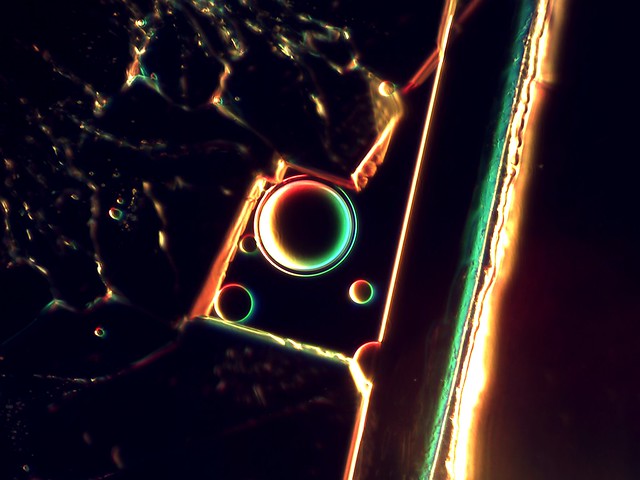 What It Is: Unknown.What It Could Be: Four pinhole black holes sucking in their first victims.
What It Is: Unknown.What It Could Be: Four pinhole black holes sucking in their first victims.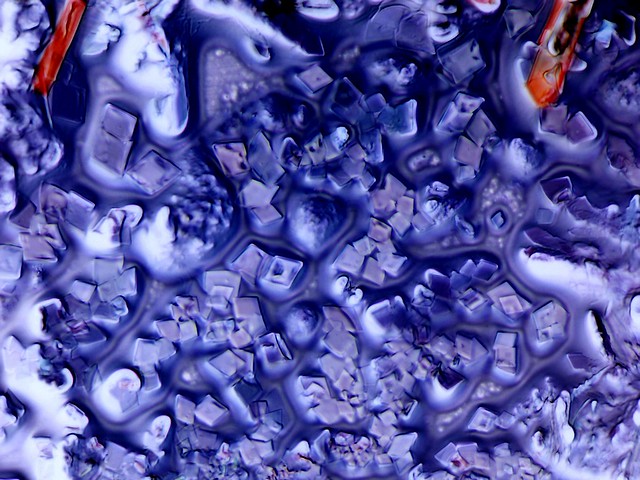 What It Is: Multiple crystals. Image achieved through potpourri use of phase optics, polarized light, and slight Photoshopping.What It Could Be: The icy rock core of the planet Neptune.
What It Is: Multiple crystals. Image achieved through potpourri use of phase optics, polarized light, and slight Photoshopping.What It Could Be: The icy rock core of the planet Neptune.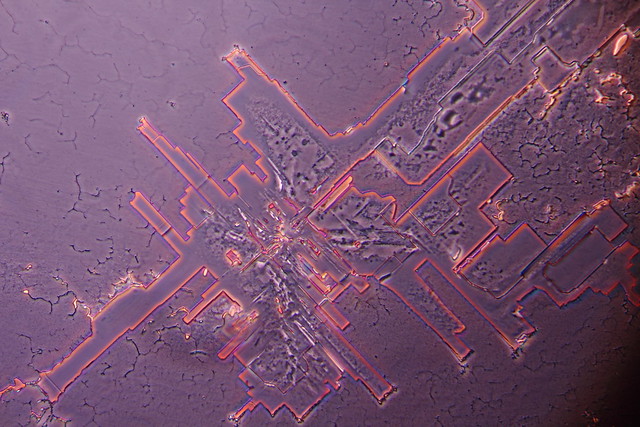 What It Is: Dried soap and polymer mix.What It Could Be: A neon-reflective mirror image of the Chicago skyline caked on a cracking purple wall.
What It Is: Dried soap and polymer mix.What It Could Be: A neon-reflective mirror image of the Chicago skyline caked on a cracking purple wall.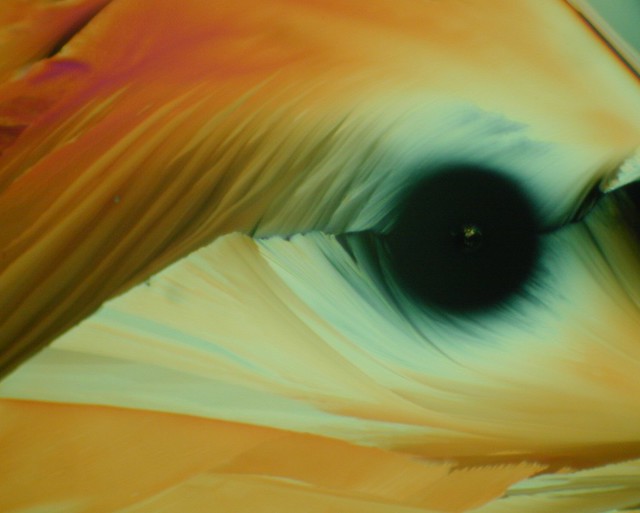 What It Is: Crystals under a polarized light photomicrograph. Taken with a Coolpix 950.What It Could Be: The zoomed-in eye of a Mandarin duck.
What It Is: Crystals under a polarized light photomicrograph. Taken with a Coolpix 950.What It Could Be: The zoomed-in eye of a Mandarin duck.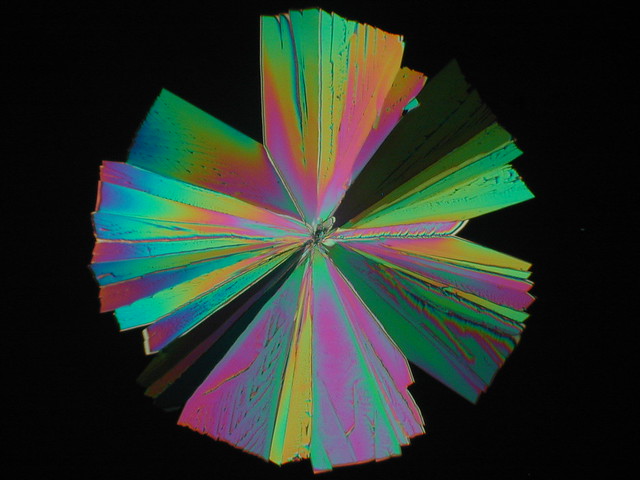 What It Is: Group of unknown crystals.What It Could Be: Glitch art manipulated to look like a digital flower bouquet.
What It Is: Group of unknown crystals.What It Could Be: Glitch art manipulated to look like a digital flower bouquet.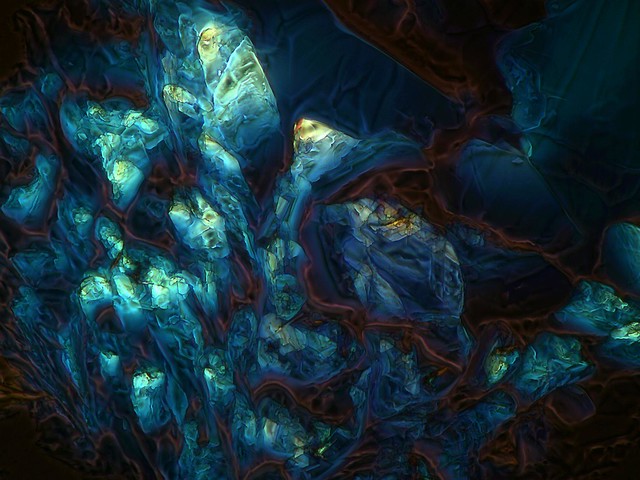 What It Is: More crystals.What It Could Be: The cathedral-like interior of a glacier cave.
What It Is: More crystals.What It Could Be: The cathedral-like interior of a glacier cave.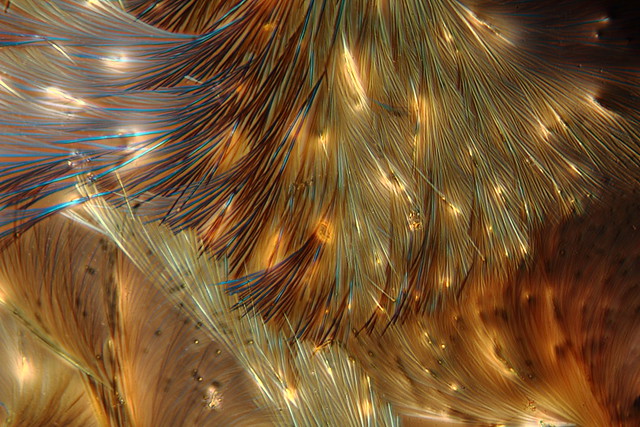 What It Is: Camera test.What It Could Be: Lab-grown sea anemone. Or, electrified dandelion spores.
What It Is: Camera test.What It Could Be: Lab-grown sea anemone. Or, electrified dandelion spores.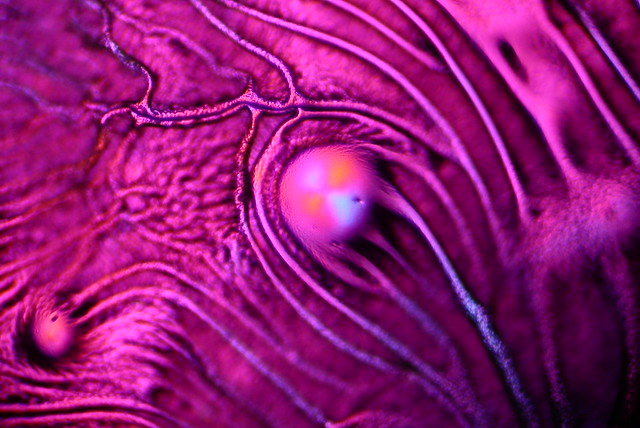 What It Is: Super glue under the glow of light that has been polarized by a full wave retardation plate.What It Could Be: The protruding eye of a fish-skinned alien lifeform. Definitely not something you’d want to keep as a pet.
What It Is: Super glue under the glow of light that has been polarized by a full wave retardation plate.What It Could Be: The protruding eye of a fish-skinned alien lifeform. Definitely not something you’d want to keep as a pet. What It Is: An assortment of photographs of Diphenhydramine Hydrochloride crystals grouped together.What It Could Be: A feather-embroidered flower arrangement on a cheesy art piece found in your neighborhood thrift store.
What It Is: An assortment of photographs of Diphenhydramine Hydrochloride crystals grouped together.What It Could Be: A feather-embroidered flower arrangement on a cheesy art piece found in your neighborhood thrift store.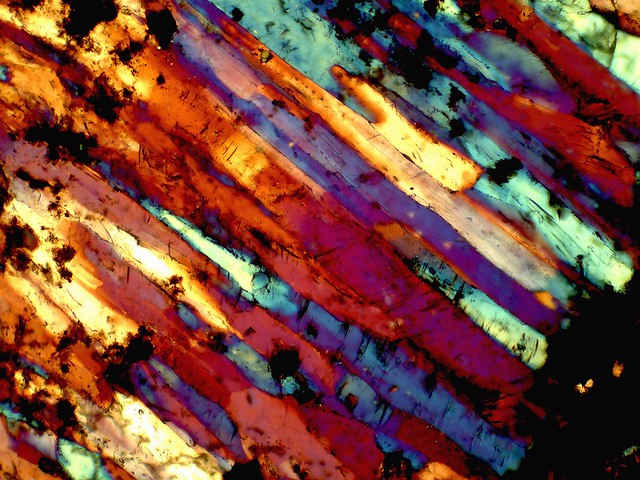 What It Is: Rock thin section photomicrograph.What It Could Be: An abstract stained glass window due for some Windex.
What It Is: Rock thin section photomicrograph.What It Could Be: An abstract stained glass window due for some Windex. What It Is: Photomicrograph of crystals in the process of formation from a thin layer of amorphous liquid.What It Could Be: Chunks of a motherboard floating in a murky puddle.
What It Is: Photomicrograph of crystals in the process of formation from a thin layer of amorphous liquid.What It Could Be: Chunks of a motherboard floating in a murky puddle.
Advertisement



Advertisement









